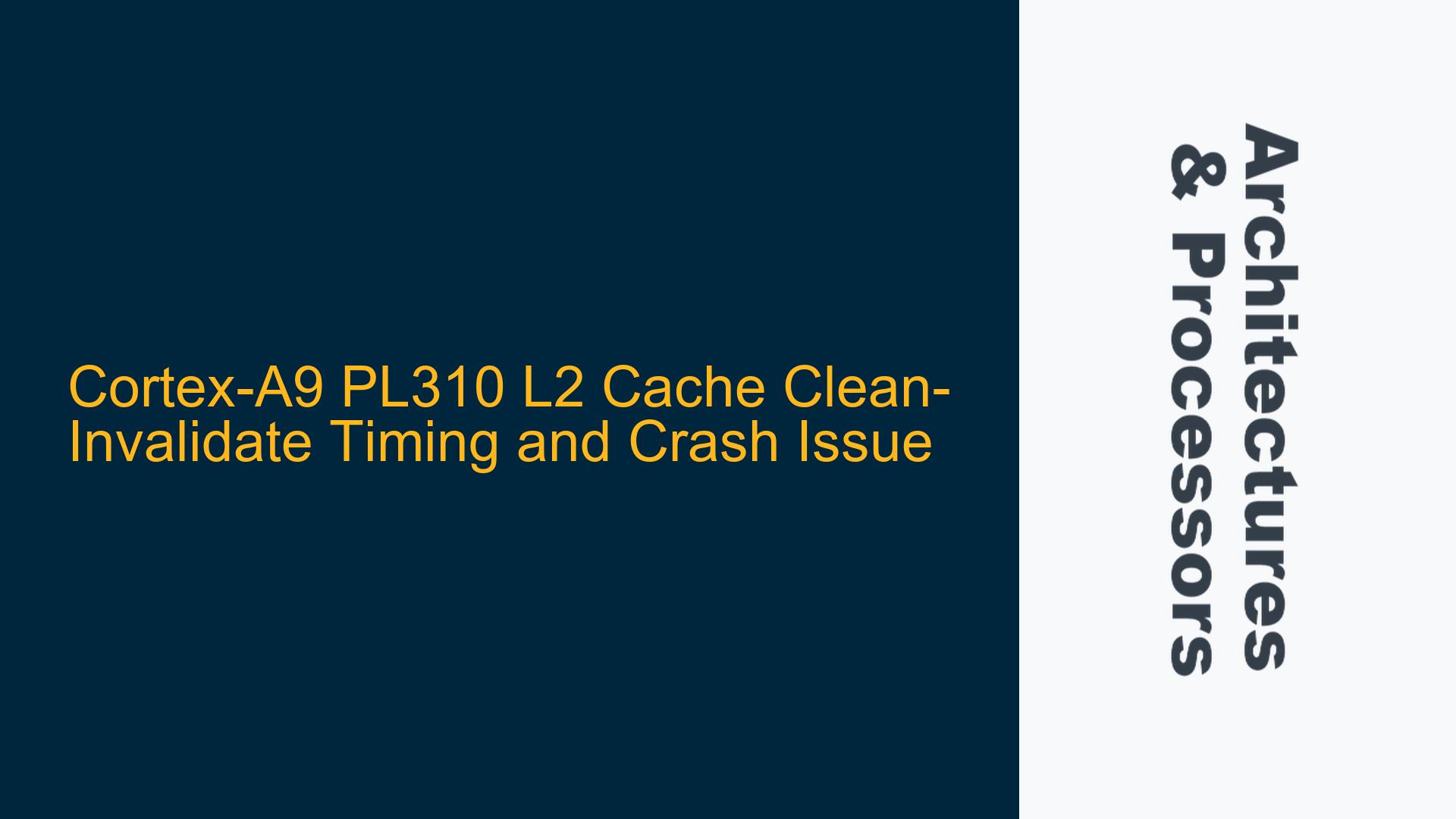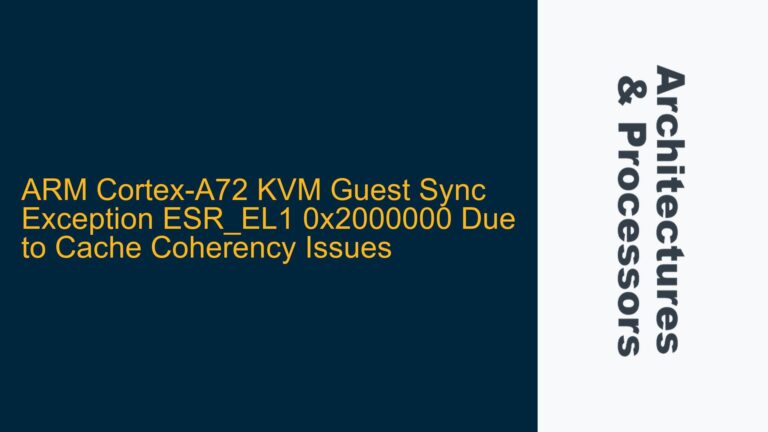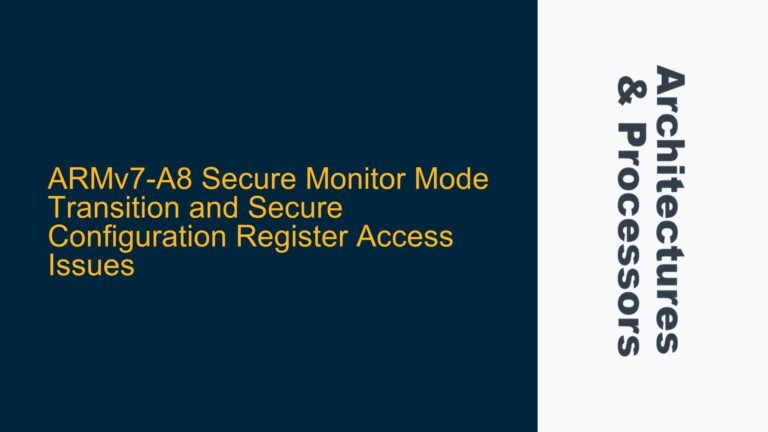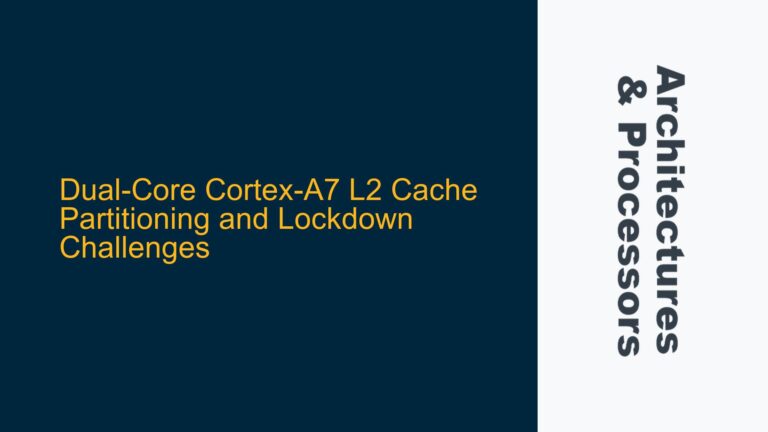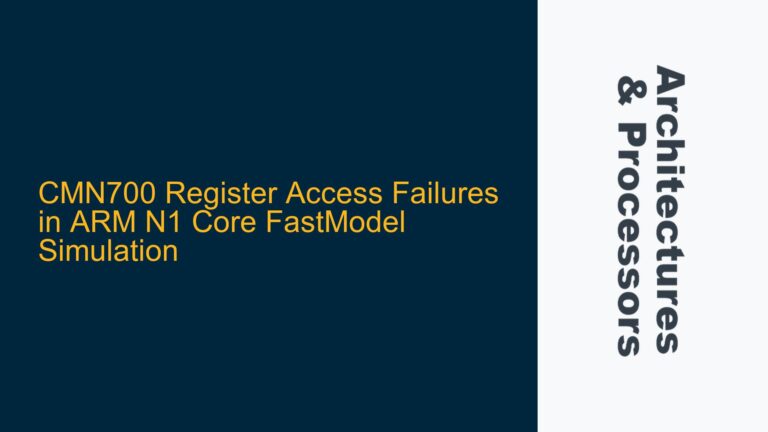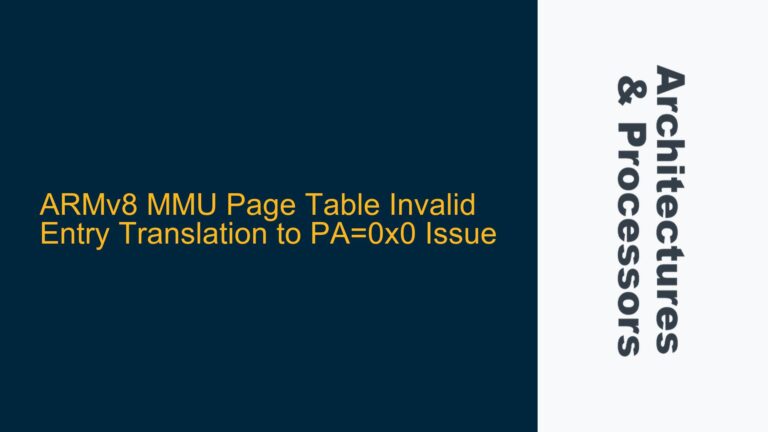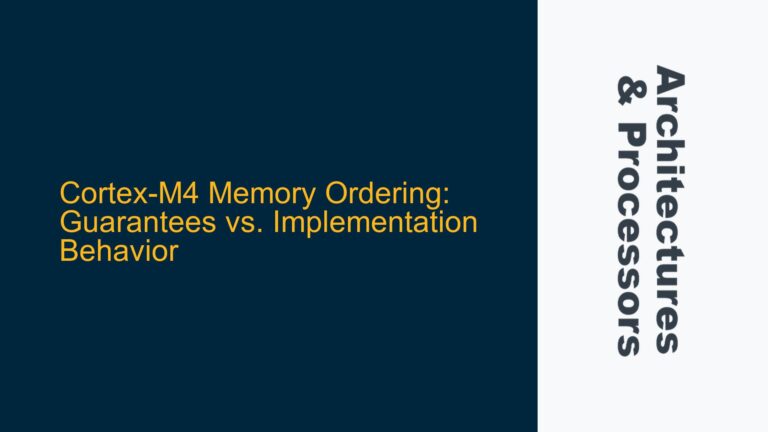Cortex-A9 PL310 L2 Cache Clean-Invalidate Sequence and CPU Crash
The Cortex-A9 PL310 L2 cache controller is a critical component for ensuring data coherency and performance in ARM-based systems. However, improper handling of cache maintenance operations, particularly clean-invalidate sequences, can lead to system instability or outright CPU crashes. This issue is particularly evident when performing cache maintenance operations on the AM4379 CPU, where timing discrepancies between the L1 and L2 cache operations can cause the CPU to abort during the cache synchronization step. Understanding the root cause of this issue requires a deep dive into the cache maintenance sequence, the timing requirements of the PL310 L2 cache controller, and the interaction between the L1 and L2 caches during clean-invalidate operations.
The problem manifests when executing a clean-invalidate sequence on the PL310 L2 cache, specifically during the cache synchronization step. The CPU crashes immediately when attempting to write to the cache sync register, but the issue does not occur when stepping through the code in a debugger. This suggests a timing-related problem, where the delay introduced by the debugger inadvertently masks the issue. Adding an artificial delay before the cache sync step resolves the crash, but this is not a robust or optimal solution. The core issue lies in the timing and synchronization requirements of the PL310 L2 cache controller, which must be carefully managed to avoid data corruption or system instability.
PL310 L2 Cache Controller Timing Requirements and Sequence Misalignment
The PL310 L2 cache controller requires precise timing and sequencing of cache maintenance operations to ensure data coherency and system stability. The clean-invalidate sequence outlined in the PL310 Technical Reference Manual (TRM) involves multiple steps, including cleaning the L1 cache, performing a Data Synchronization Barrier (DSB), cleaning and invalidating the L2 cache, and finally performing a cache sync operation. Each of these steps must be executed in a specific order and with appropriate timing to ensure that the cache operations complete correctly and that no data is lost or corrupted.
The crash occurs during the cache sync step, which is intended to ensure that all previous cache maintenance operations have completed before proceeding. The PL310 L2 cache controller uses a cache sync register to indicate when the cache operations have finished. Writing to this register triggers the synchronization process, and the CPU must wait until the sync operation completes before continuing. However, if the cache sync operation is initiated too soon after the clean-invalidate operation, the PL310 L2 cache controller may not have sufficient time to complete the previous operations, leading to a CPU abort.
The timing issue is exacerbated by the fact that the PL310 L2 cache controller operates independently of the CPU pipeline and may take a variable amount of time to complete cache maintenance operations. This variability is influenced by factors such as the current state of the cache, the number of cache lines being cleaned or invalidated, and the overall system load. When the cache sync operation is initiated immediately after the clean-invalidate operation, there is a risk that the PL310 L2 cache controller has not yet finished processing the previous operations, leading to a race condition and subsequent CPU crash.
Implementing Robust Cache Maintenance Sequences with Proper Timing and Synchronization
To resolve the Cortex-A9 PL310 L2 cache clean-invalidate timing issue, it is necessary to implement a robust cache maintenance sequence that accounts for the timing requirements of the PL310 L2 cache controller. This involves ensuring that sufficient time is allowed for the cache operations to complete before initiating the cache sync operation. While adding an artificial delay may work as a temporary solution, a more robust approach involves using the PL310 L2 cache controller’s status registers to poll for completion of the cache operations before proceeding with the cache sync.
The first step in implementing a robust cache maintenance sequence is to ensure that the L1 cache is properly cleaned before performing any L2 cache operations. This involves executing a clean operation on the L1 cache, followed by a DSB to ensure that the clean operation has completed. The DSB ensures that all previous memory operations, including the L1 cache clean, have completed before proceeding to the next step.
Next, the L2 cache clean-invalidate operation must be performed. This involves writing to the appropriate PL310 L2 cache controller registers to initiate the clean-invalidate operation. After initiating the clean-invalidate operation, it is important to wait for the operation to complete before proceeding. This can be done by polling the PL310 L2 cache controller’s status registers to check for completion. The status registers provide information about the current state of the cache operations, allowing the CPU to determine when the clean-invalidate operation has finished.
Once the clean-invalidate operation has completed, the cache sync operation can be initiated. However, it is important to ensure that sufficient time has elapsed since the completion of the clean-invalidate operation to avoid any timing-related issues. This can be done by adding a small delay or by polling the PL310 L2 cache controller’s status registers to ensure that the cache operations have fully completed. After the cache sync operation has completed, a final DSB should be executed to ensure that all cache operations have been fully synchronized and that no data has been lost or corrupted.
In addition to implementing a robust cache maintenance sequence, it is also important to consider the overall system design and the impact of cache operations on system performance. Cache maintenance operations can be expensive in terms of both time and power, so it is important to minimize the frequency of these operations and to optimize the sequence to reduce the overall impact on system performance. This may involve batching cache operations, using more efficient cache maintenance sequences, or optimizing the system design to reduce the need for cache maintenance operations.
By carefully managing the timing and synchronization of cache maintenance operations, it is possible to avoid the Cortex-A9 PL310 L2 cache clean-invalidate timing issue and ensure system stability. This requires a deep understanding of the PL310 L2 cache controller’s timing requirements, as well as careful implementation of cache maintenance sequences to ensure that all operations complete correctly and that no data is lost or corrupted. With proper implementation, it is possible to achieve reliable and efficient cache maintenance on the Cortex-A9 PL310 L2 cache controller, even in complex and high-performance systems.
